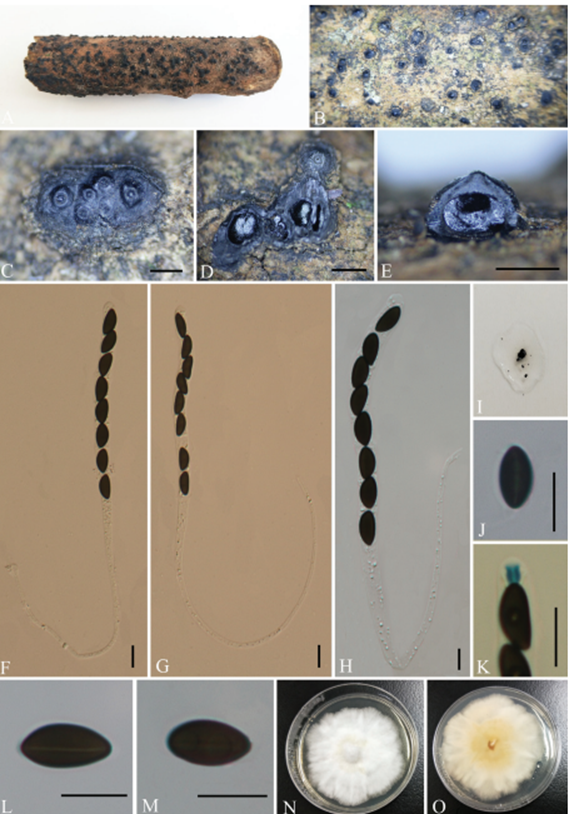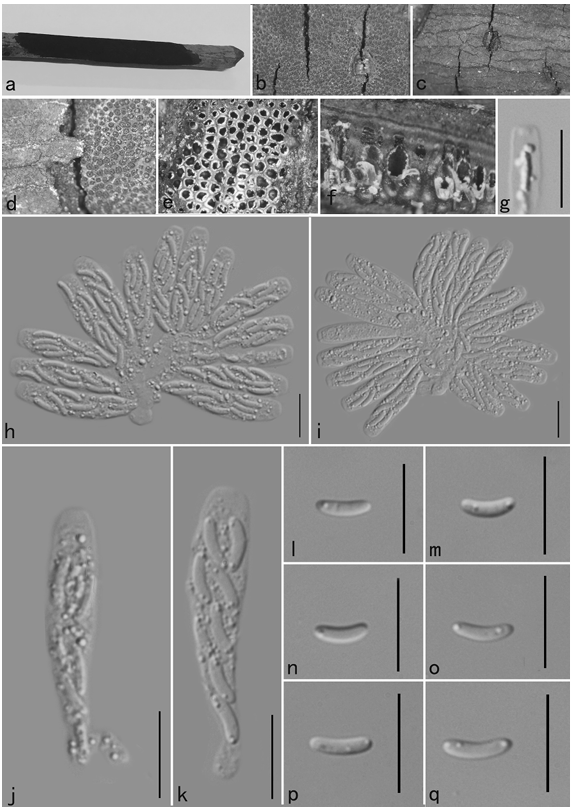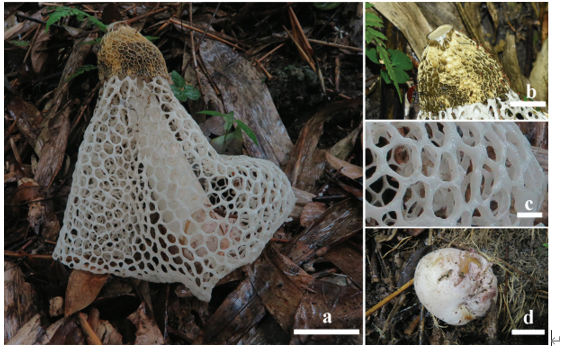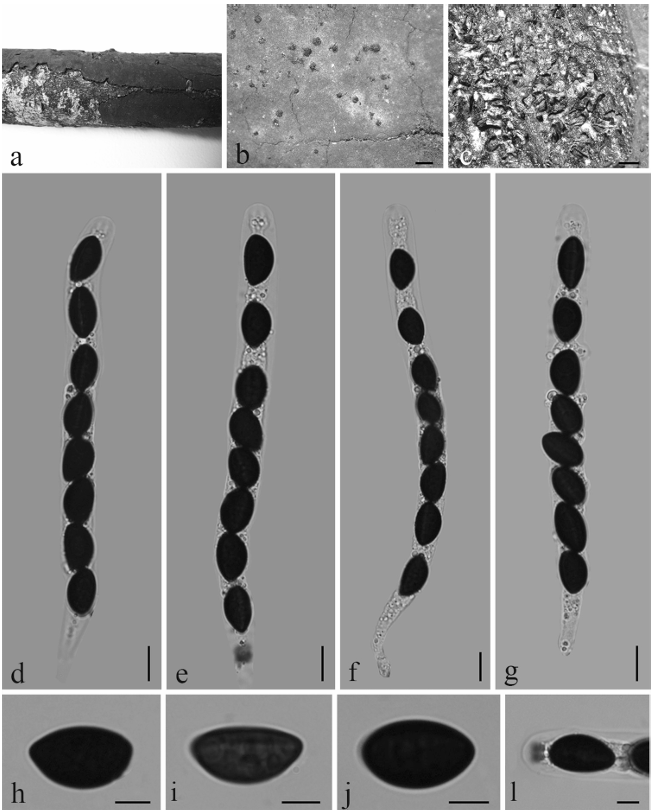Nemania camelliae Y.H. Pi & Q.R. Li, sp. Nov.2021
MycoBank No: 840086
Holotype: ; GMBC0068
Morphological description
Sexual morph: Stromata pulvinate to effused-pulvinate, rarely perithecioid, orbicular to irregularly elongated, often coalescent; single distribution or confluent into irregularly elongated compound stromata, 1.5–4 mm long × 1–2 mm wide × 0.5–1 mm high, surface dull black, hard-textured, with inconspicuous to moderately exposed perithecial contours and usually sloping margins, internally black between ascomata, carbonaceous; subperithecial tissue black, conspicuous; does not release a coloured pigment in 10% KOH. Perithecia 0.65–0.95 mm diam. × 0.65–0.7 mm high, subglobose to depressed-spherical. Ostioles finely papillate, black, conspicuously sunken in a shallow discoid depression; ostiolar area blackish, shiny, frequently flattened. Asci 180–290 × 6–11 μm (av. = 230 × 7.5 μm, n = 30), 8-spored, unitunicate, long-cylindrical, longstipitate, the spore-bearing parts 80–95 µm long, apically rounded with a J+, apical apparatus, 2–3 × 2.5–4 µm (av. = 2.5 × 3 µm, n = 30), jar shape. Ascospores 10–14 × 4.5–7 μm (av. = 12 × 5.5 μm, n = 30), uniseriate, unicellular, ellipsoid to slightly fusoid, inequilateral, with slightly narrow rounded ends, smooth, brown to dark brown, with a fairly conspicuous, straight, almost spore-length germ slit on the least convex side; lacking a sheath and appendage; perispore indehiscent in 10% KOH.
Asexual morph: Undetermined.
Cultures: The colony grows on PDA medium with a diameter of 6 cm after one week at 25 °C; white, cottony, circular, flocculent or velvety, with light yellow to slightly yellow at the centre. Not sporulating on OA nor on PDA.
Habitat: on dead wood of Camellia sp.
Distribution: CHINA, Guizhou Province, Tongren City, Fanjingshan Nature Reserve
GenBank Accession: its MW851888; rpb2 MW836056; tubulin W836030; actin MW836047. Its MW851889; rpb2 MW836055; tubulin MW836029; actin MW836046.
Notes: Phylogenetic analyses showed that Nemania camelliae form a distinct clade with N. bipapillata (82% ML, 0.97 BYPP, Fig. 1). Morphologically, N. camelliae is similar to N. immersidiscus Van der Gucht et al. in having a small discoid depression around the ostiolar papilla. However, the stromata of N. camelliae are entirely carbonaceous, whereas those of N. immersidiscus contain white soft tissue between and beneath the perithecia (Ju and Rogers 2002). Moreover, N. immersidiscus has slightly thinner ascospores [(10–)11–14(–16) × (4–)4.5–5.5 µm)].
Reference: [1] Song, Y. J. , & Li, S. Q. . (2008). A taxonomic study of chinese nematogmus species (araneae, linyphiidae). Organisms, diversity, & evolution(4), 8.
Nemania camelliae (GMB0068, holotype) A type material B, C stromata on the surface of host D transverse section of stroma E longitudinal section of stroma F–H asci with ascospores I pigments in 10% KOH J ascospore with indehiscent perispore in 10% KOH K ascus apical apparatus (stained in Melzer’s Reagent) L, M ascospores N, O colonies on PDA (N-upper, O-lower). Scale bars: 0.5 mm (C–E); 10 μm (F–H, J–M)









